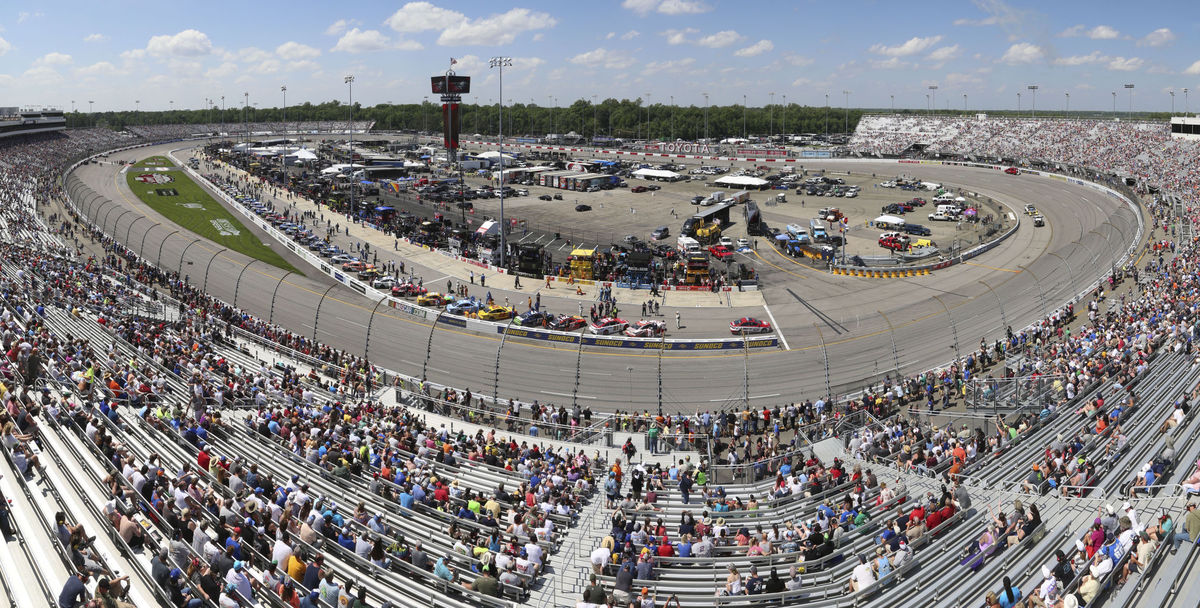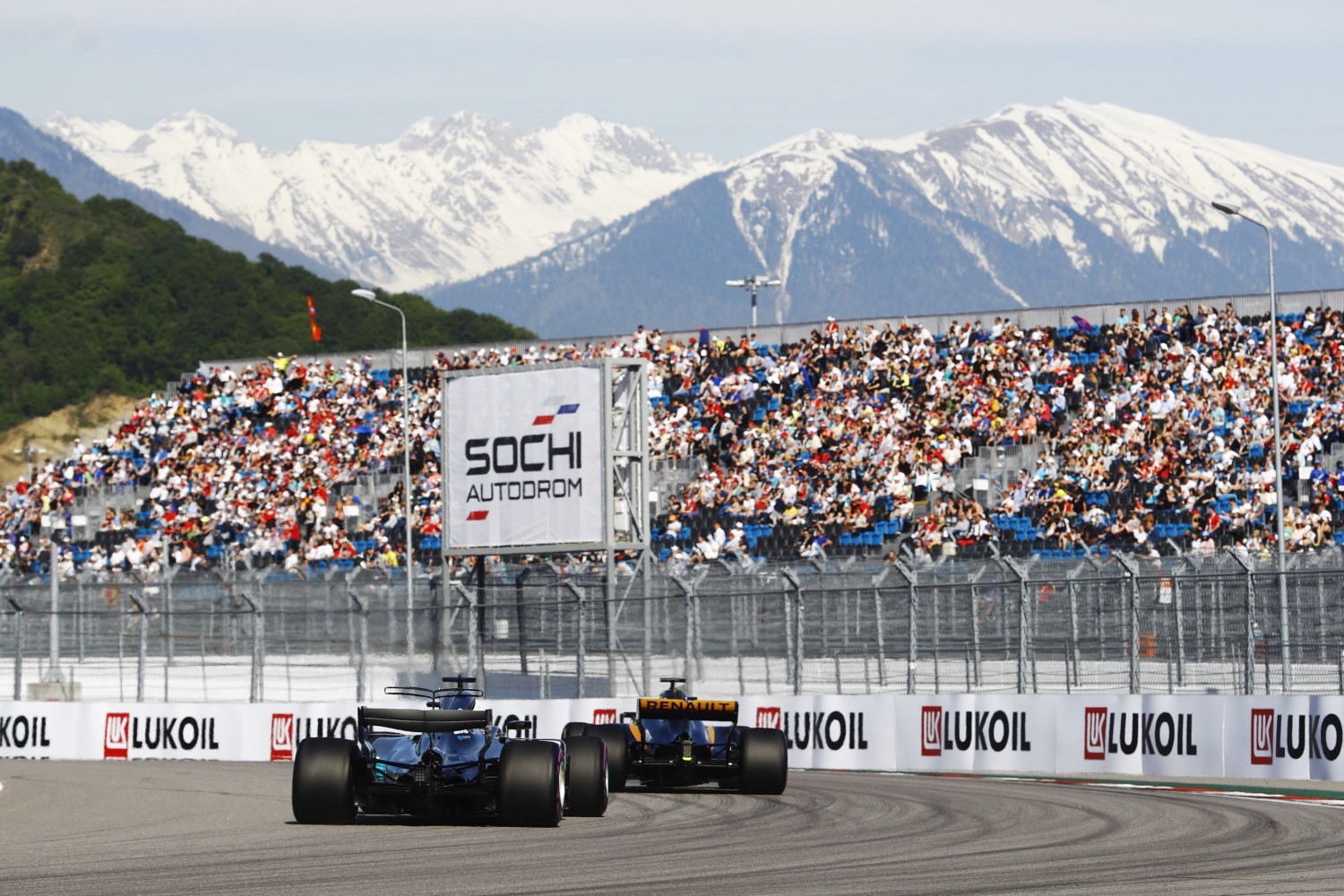Oval track racing in serious decline (Update)
 |
| Richmond didn't even have 1/2 of its 60,000 seats occupied |
| Dan Currier Photo |
 |
| Meanwhile at the IndyCar race in Phoenix you can shoot a cannon into some section of the grandstands and not hit anyone |
UPDATE A reader writes, Dear AR1.com, I see the end of oval racing in America with very low attendance at this weekend racing at Phoenix and Richmond. I fear for IndyCar that the Indy 500 will be the only oval race for Indy Car in the next couple of years because Indy Cars perform better than on road and street circuits than on short ovals while NASCAR has continue to lose fans at an alarming rate. Alistair Fannell
Dear Alistair, It appears today's fan has little interest in watching race cars go around in circles for hours. After awhile it can be dizzying. Mark C.
05/02/17
One of the tough things about writing a column regarding stock car racing is that once in a while you feel compelled to shrug off the racing itself and write about the sport’s struggles as an industry.
This is one of those times writes Randy Hallman of richmond.com.
The racing at Richmond International Raceway on Sunday saw cars three- and four-wide often enough to entertain the fans. What few fans there were.
The Sunday afternoon sun shone down on at least as many empty, shiny aluminum seats as on fans who showed up to fill them.
RIR has become a case study for NASCAR’s industry-wide difficulty in getting fans to come watch.
Some history: From 1992 to 2008, the track had a streak of 33 straight sold-out Cup races. When the streak started, the place could seat 59,368. RIR kept adding seats and kept selling out. By 2007 the capacity was 112,029, with a waiting list for prime seats said to be in the tens of thousands.
The streak ended in September 2008 when a tropical storm blew through and postponed the race a day. The economy was going sour, with the NASCAR fan demographic taking a hard hit. There hasn’t been an RIR sellout since.
The track has widened seats, covered seats, torn down grandstand sections. Capacity now is 60,000, just about where it was in ’92. Sunday’s crowd didn’t appear to fill half those seats. NASCAR stopped giving crowd estimates years ago. Too embarrassing.
Other sports are struggling, too. But stock car racing has it bad. I mean, Virginia Tech can still fill Lane Stadium — capacity 66,000 — for several football games each fall way out yonder in Blacksburg. RIR is in a region with a far denser population, and proximity to a major interstate crossroads.
What are some of the reasons for NASCAR’S slump? I’ve talked to fans, seen their unhappy social media posts.
Here are a few of the points that stand out.
The effects of the deep recession linger almost a decade later. Traveling fans have significant fuel, lodging and food costs. A Cup race isn’t all that cheap for a family of four — even though RIR tickets start at a fairly reasonable $35, and you can bring in modest-sized coolers with food and drink, and free parking is available.
With money tight, many fans cut back from, say, six or eight races a year to one or two. Or none. For some it was like breaking an addiction.
 |
| Meanwhile at F1 tracks they are packing them in at $300+ per ticket |
Some say allowing Toyota, a foreign manufacturer, to field cars has ruined the purity of the sport. I’m on the opposite end of that argument. I’d like to see BMWs and Hondas in the mix. (Now, now, let’s be civil!)
Some fans blame Brian France, the third-generation chairman and CEO of NASCAR, for ruining the sport in pursuit of the almighty dollar. He has certainly shepherded stock car racing into a new revenue stratosphere — NASCAR will be paid $8.2 billion by Fox and NBC combined for TV rights from 2015 through 2024, according to Sports Business Daily.
Years ago, fans were upset that race drivers, risking their lives, weren’t getting paid as much as, say, golf or tennis stars. That has changed. But older fans say today’s racers are so under the influence of money that they are all pretty-boy (or girl) corporate spokespeople, with no real personality.
For what that’s worth, I have to say I think some of that personality gets through. There are some drivers I like a lot and some I don’t like much at all.
Some fans say the racing itself became boring. Fair enough. NASCAR went through a serious slump in that regard, with cars so aerodynamically sensitive that on many tracks drivers were unable to make bold moves. Rule changes in 2016 and this year have helped.
Lots of fans don’t like the 10-race playoff format of the past few years, which takes some of the starch out of the other 26 races on the schedule. I can’t really disagree.
Some complain that too many rules and penalties detract from the racing. Sometimes, that happens. Sunday’s race case in point: Kyle Busch fought nearly the whole race to overcome an early penalty and challenge for the lead. Then he botched an entry to the pits and was sent to the back of the pack again. No time to recover.
Some insist that NASCAR conspires to favor certain drivers or teams or car makes. I cannot prove there’s no truth to those theories, but I’d like to know why, if that’s the case, Dale Earnhardt Jr. — the hands-down most popular driver in the sport and its biggest draw — has won only 26 races and no championships in 19 seasons.
Some fans aren’t happy with RIR’s switch back to day racing for its spring event. The track will be willing to give up on day races if they get a sense that the preference is clearly for night races.
Here’s something to consider. Virginia is the only state with four Cup dates each year — two each at RIR and at Martinsville Speedway. Is that overkill? Would the tracks be better off with a single race each?
Those are two great race tracks. I want to keep all four races and to see them in person — as true when I’ve been a paying customer as when I’ve had media passes.
RIR president Dennis Bickmeier, as upbeat as anyone I’ve ever met, was disheartened by Sunday’s turnout. When I asked him what changes could be made, he said, “Everything’s on the table."
That willingness to change may be what all of NASCAR needs right now. Randy Hallman/RichmondTimes-Dispatch
